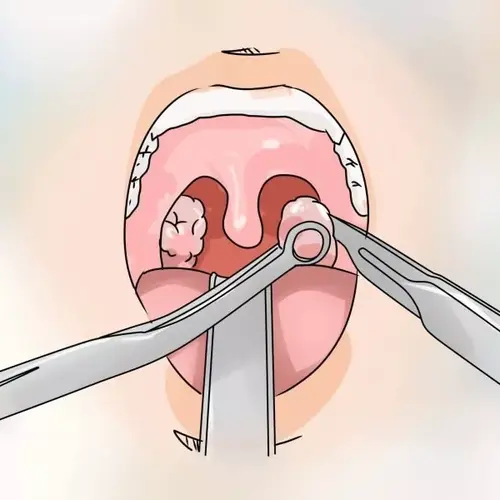Classical tonsillectomy - procedure for the operation

Author: Dr. İsmayıl İ. Category: Throat
Published: 2022 - 07 - Nov
Classical tonsillectomy
This is the most commonly used method. Modern surgeons quite often perform the classic form of tonsillectomy. Classical tonsillectomy can be performed both under local anesthesia and under endotracheal anesthesia.
This method, classical tonsillectomy, has significant disadvantages:
- high risk of bleeding both during tonsillectomy and after surgery,
- after classical tonsillectomy, deforming scars are formed in the anterior and posterior palatine arches and soft palate,
- lack of guarantees of radical removal of palatine tonsils, especially if tonsillectomy is performed under local anesthesia,
- the possibility of penetration into the peripharyngeal space with corresponding complications.
When using local anesthesia, the patient is in a sitting position opposite the doctor and holds a blood spitting tray in his hands. When performing tonsillectomy under general anesthesia, the patient lies on the table with his head thrown back, and the doctor sits behind his head.
The first movement of the doctor after anesthesia - the tonsils are captured by a special instrument, the so-called alice, and then a superficial incision of the mucous membrane is made in the region of the upper third of the palatine arch. Further, through this incision, a special thin raspator with a non-sharp edge is used to separate the mucous membrane from the tonsil and an attempt is made to get under the tonsil capsule. Next, the upper pole of the palatine tonsil is separated, and gradually fixing the tonsil itself with alice with one hand, and separating the tissue subcapsularly with the other, the surgeon reaches the lower pole of the tonsil. Further, for normal visualization of the lower pole of the tonsil, it is pulled up and medially with one hand without any effort, and then the palatoglossal and palatopharyngeal arch is cut off with a previously introduced loop tonsillotomy.
Next, carefully examine the bed of the removed tonsils. The goal is to determine whether there are any remaining sections of the tonsils, what hemostasis is, whether there are large atypical vessels. It is very important to remove exactly all the tissue in order to avoid a recurrence of the disease. We complete the operation only after we are convinced that complete hemostasis has been achieved.